Jan.16-29, 2010
Although not in full swing yet, the rainy season is here and it’s been drizzling frequently and raining on occasion, enough for the trees (and weeds) to burst with growth. Also, there have been some new additions to the volunteer work force and we’ve got quite a team now.
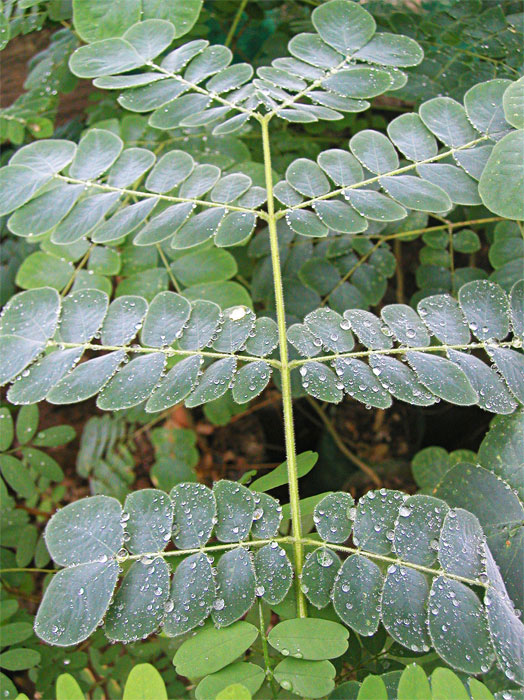

There’s Jake and Ashley from Michigan, who’ve been with us for over a month already. New arrivals include Daniel from Switzerland, Rebecca from Sweden, and Felicia from Holland.
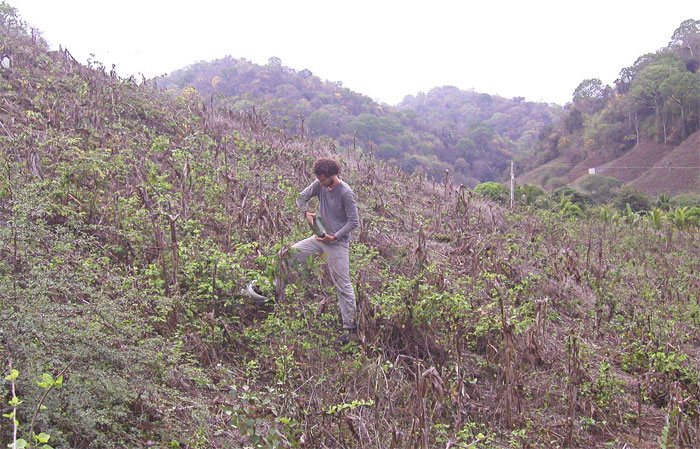
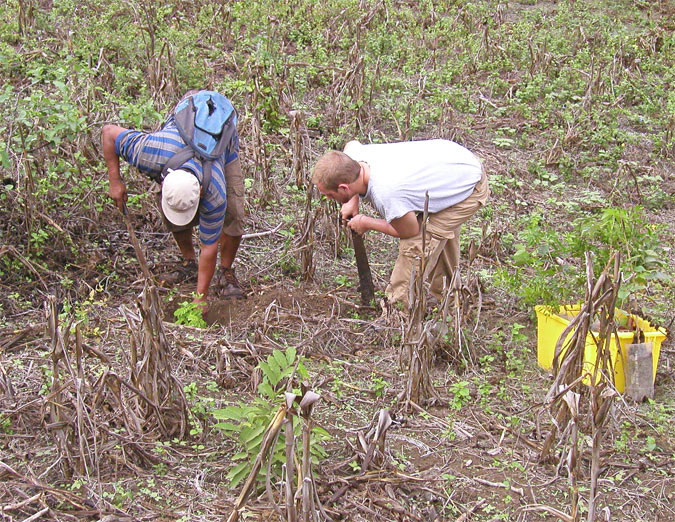
We are continuing to plant trees like crazy and have even expanded one site with more trails and holes. One complicating factor with planting trees in land that is being recovered from agriculture use is that the lack of a proper forest canopy gives an advantage to weeds that can transform sunlight into growth far faster than the trees we plant. We need to mark each tree we plant with a painted stick in order to be able to find it just one or two weeks later.
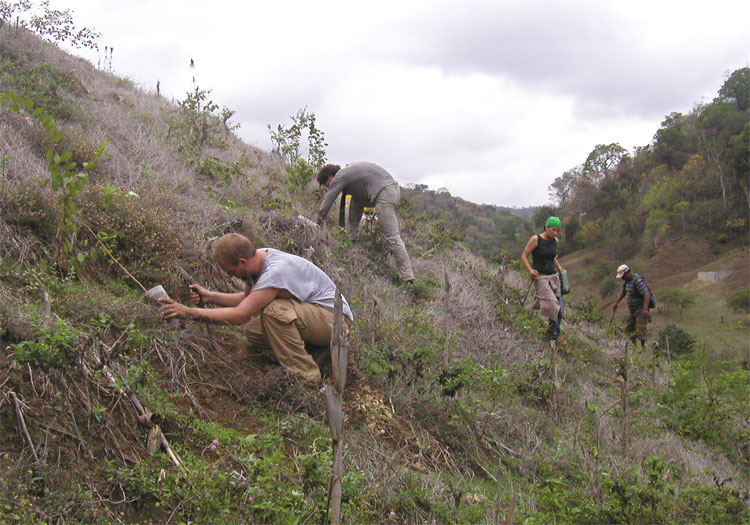
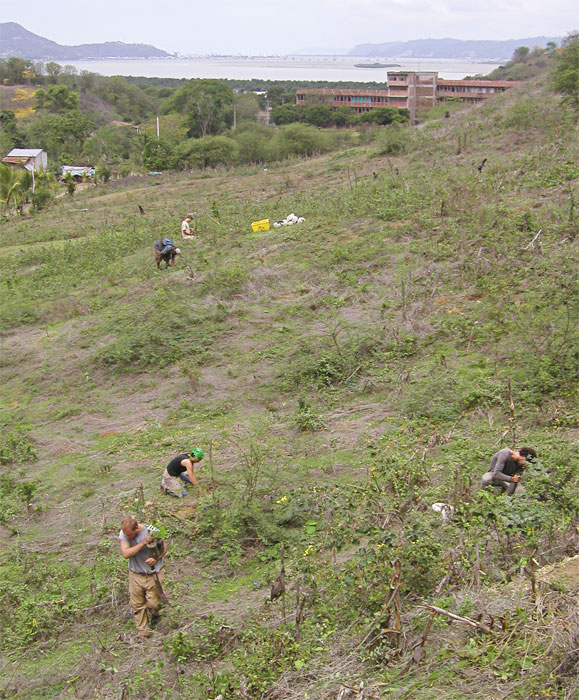
Some sticks have already been prepared and placed at two of the sites, but there weren’t enough for all the trees and there are still more sites left to plant. Additional sticks for marking the trees have been acquired. This work has become somewhat urgent since we risk losing track entirely of trees that aren’t marked after only a couple weeks.
This year we started out using the branches of Neem trees (a non-native) as the markers, but we ran out of branches that are the adequate size to harvest. So we’ve decided to use pieces of Bamboo. Bamboo is often used in construction and can be recycled after its first use for stakes to make the trees. Where else to find stashes of Bamboo pieces suitable for stakes but at the city dump? We spent a morning gathering bamboo and other wood scraps to salvage as markers for the trees we plant.
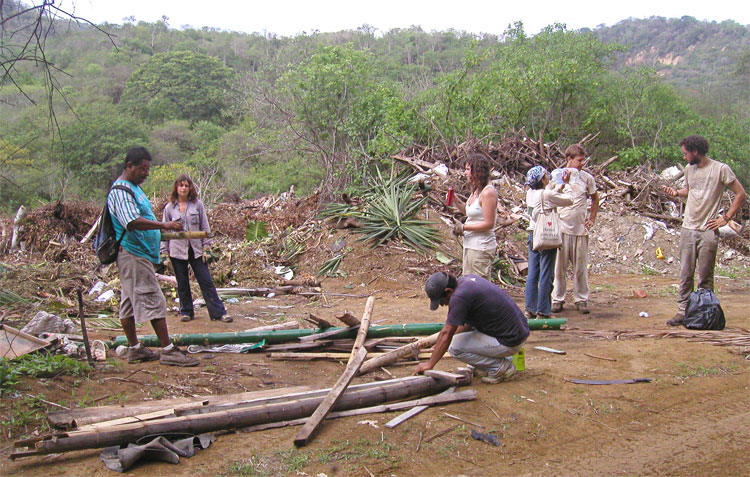

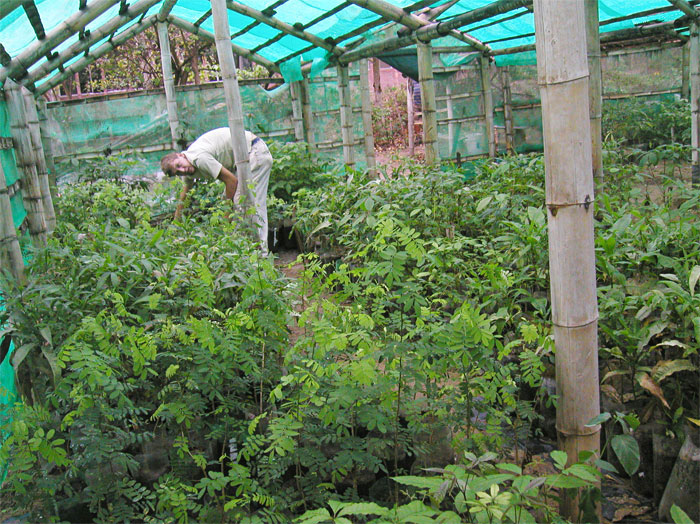
The greenhouse has also needed some attention. The weeds have been kept back and the trees well organized. As each site is planted, we move out the largest trees of each species first. Since it will take up to a couple months to plant all the trees, the smaller ones will have a chance to grow some more before they are transplanted to the field. The black plastic under the trees has worked great for preventing tree roots from growing through the holes in the bottom of their three-liter plastic bottles and into the floor of the greenhouse.

On a bit of a side note, volunteer Daniel has invented a way to interconnect pieces of the three-liter plastic bottles (after the tree has been transplanted) to create a roof that can be used for rainwater collection. He is in the process of gathering correct sized pieces to make a trial roof that we will build at the greenhouse. Since he came up with this idea, all the trees we plant are being cut from their bottles along the proper lines in the plastic so that each bottle produces two pieces of roofing (if cut correctly). If this works, we will be re-reusing the three-liter bottle for one more purpose.
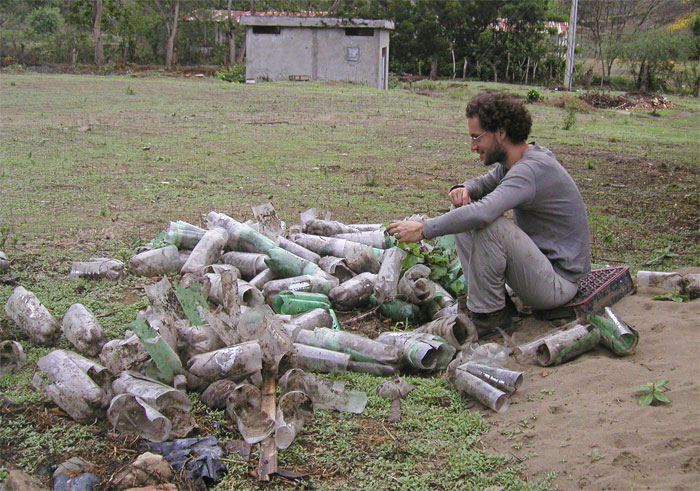
In theory, the life of a three-liter plastic bottle that comes into the hands of a Planet Drummer really only starts after being emptied of its original liquid contents. First, the bottle is used as storage container for a native tree sapling in the greenhouse for approximately one year. The wrapper from the bottle can be turned into a durable recycled plastic bag with recycled bicycle tire handles (thanks to previous Bioregional Educator Paola Devito for this idea). After the tree is transplanted, the majority of the plastic from the bottle can then be turned into tile-like pieces which will form a roof capable of capturing rain water.
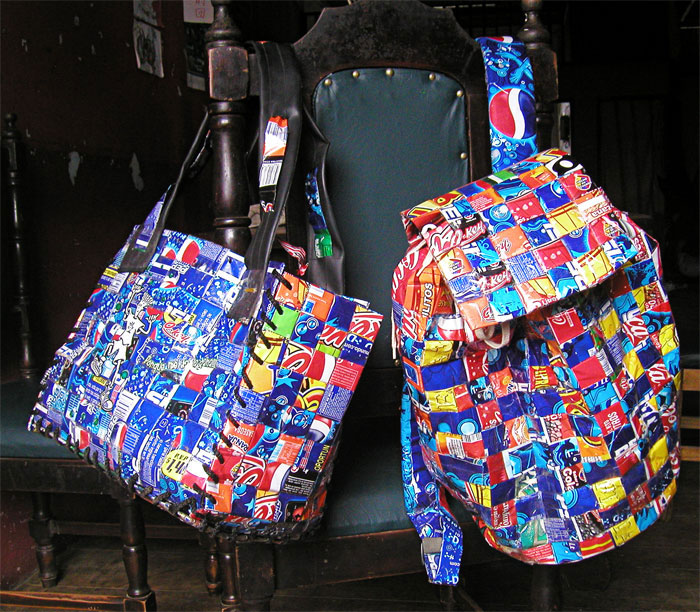
Pásalo bien,
Clay

Reader Interactions